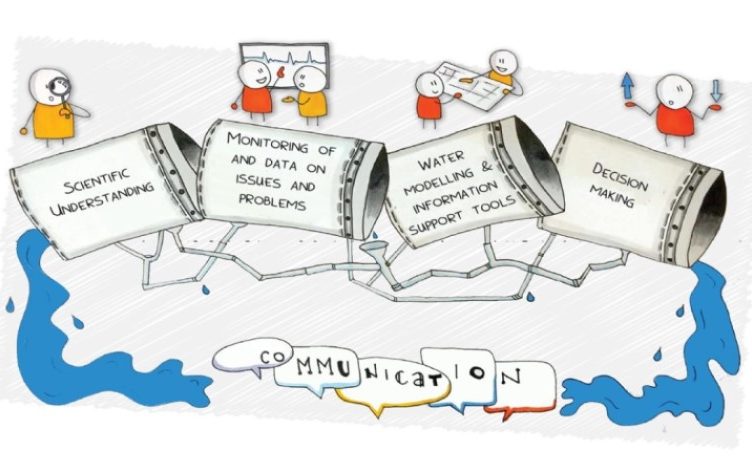
05/12/2024
Event Summary: Overview of water quality modelling projects from the Queensland Water Modelling Network with Callym Dunleavy
Read more
The ever-increasing importance of bringing research together with real industry needs has not been lost on the Queensland Water Modelling Network (QWMN). As of April 2021, the engagement component of the QWMN entered its second phase. The core Capability, Collaboration and Capacity Program (3CP) team at the International Water Centre, Griffith University are eager to explore and build recognition for the value of applied industry-focused water modelling research in Queensland. Our Innovation Program is just one element of the QWMN, now in its second year for our Innovation Associates (IA): Chao Deng, Cherie O’Sullivan, Chinenye Ani, Laura Bellis and Filipe Pinhati. As we look ahead, we hope to expand our Innovation Program and include new high degree research (HDR) students and industry partners with the support of the program coordinator, Dr Barbara Robson (AIMS).
On 28 July 2021, QWMN hosted the IA Showcase event at Queensland University of Technology (QUT) Kelvin Grove’s, new Education Precinct with a spectacular turn out. The sixty participants at the event, joined the IA’s, their research supervisors, industry partners and special guests to better understand the benefits for HDR students in tackling industry based problems with modelling analysis tools. Here’s how the day ran…
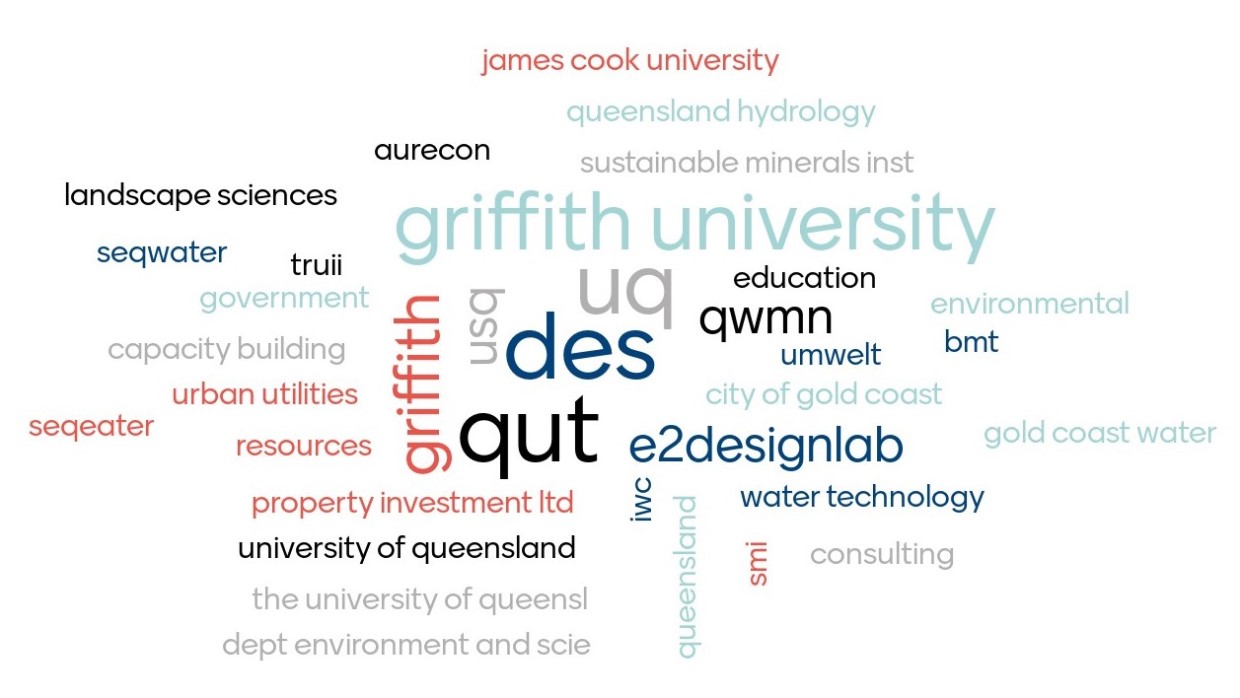
A diverse community of researchers and professionals joined us on the day.
Upon registration, participants were offered a delicious array of tea, coffee, juices, and breakfast bites from the amazing catering team from C’est Bon Restaurant and Le Bon Bar who provided delicious catering all day. Piet Filet introduced the day and our guest speakers, highlighting the importance of combining research with industry and inviting other HDRs and industry partners to join our expanding Innovation Cluster.

Ana Deletic, Executive Dean, Faculty of Engineering (QUT) warmly welcomed us to QUT and invited everyone to be present for the day – to observe, learn, share, and connect with colleagues new and existing.
Our keynote speaker, Hugh Possingham, Queensland Chief Scientist, was up next anchoring the focus on the vital role communication of science and technology plays in our modern era, offering his “Slide of Life”, as a simple 7-point plan for decision science (adapted below). Hugh reminded the room that modelling is not an activity restricted to big problems but, something we all employ in our everyday decision making.
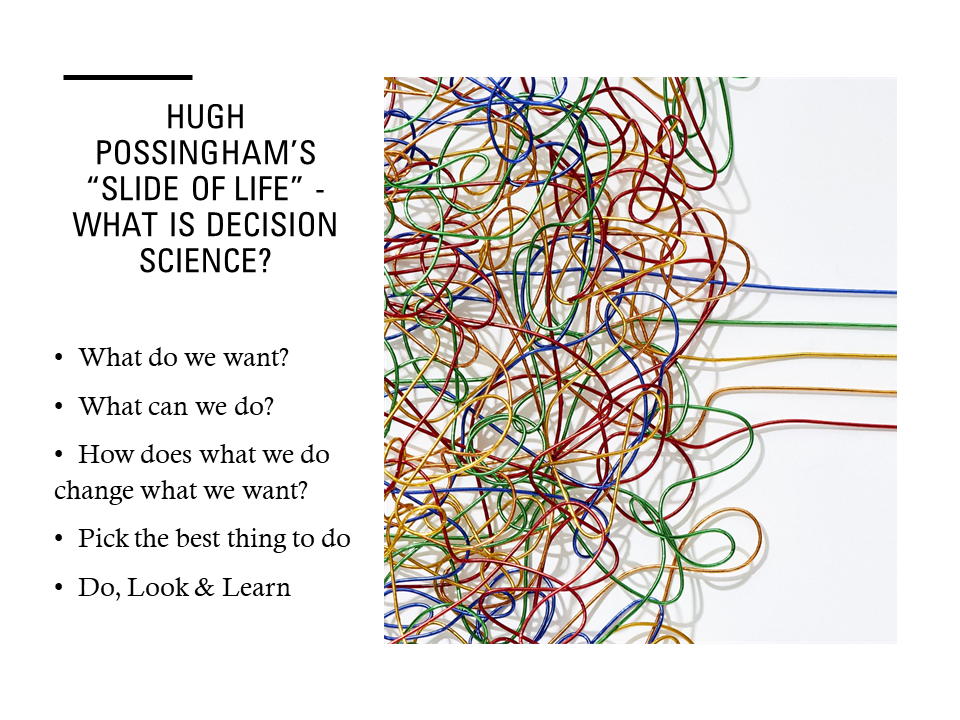
Paul Lawrence, Executive Director, Science and Technology, Department of Environment and Science took centre stage next further validating the value of mastering effective communication, collaboration, and connections within and beyond the sector. Paul encouraged participants to acknowledge and appreciate the opportunity networking offers in helping the sector align people with problems and improve decision outcomes.
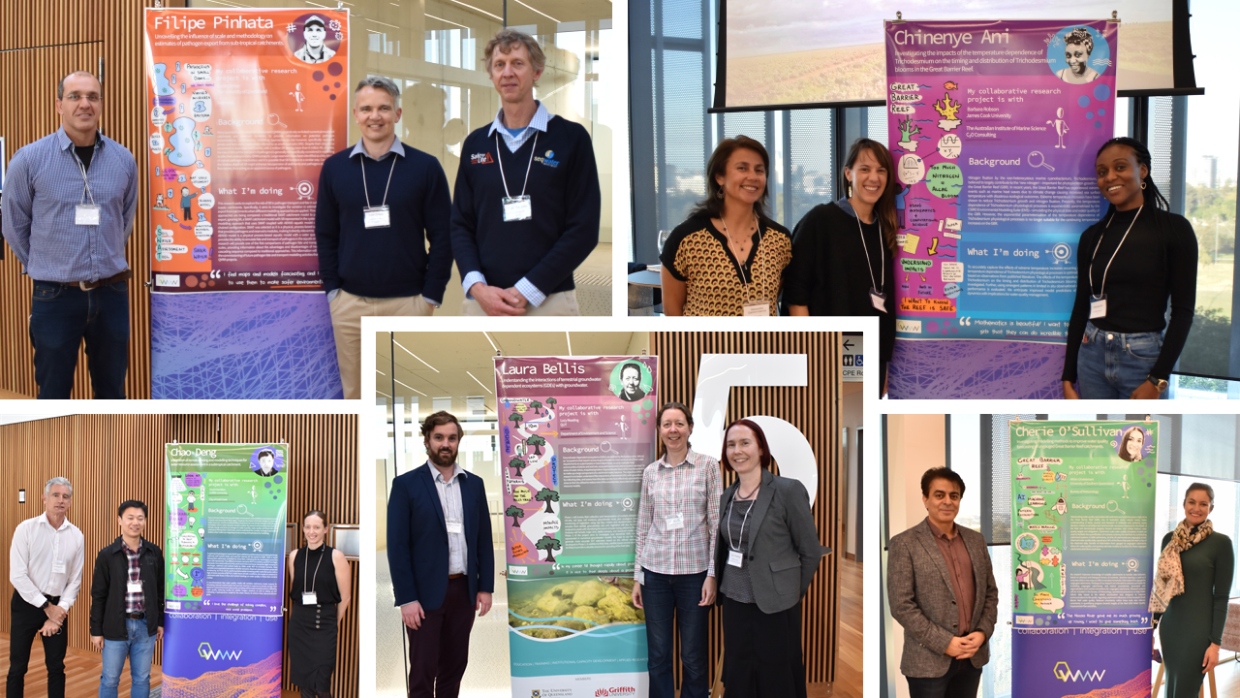
Innovation Associates joined by supervisors and industry representatives
The middle session for the day saw our Innovation Associates joined by their respective research supervisors and industry partners who introduced each research project and emphasised the significance of these working alliances before preliminary findings were shared. For links to the presentation, please hover over the names below:
Chao Deng (Griffith University & City of Gold Coast) – Integration of remote sensing and modelling techniques for water resource assessment in a subtropical catchment
Chinenye Ani (James Cook University, The Australian Institute of Marine Science and C2O Consulting) – Investigating the impacts of the temperature dependence of Trichodesmium on the timing and distribution of Trichodesmium blooms in the Great Barrier Reef
Cherie O’Sullivan (University of Southern Queensland and Bureau of Meteorology) – Investigating modelling methods to improve water quality forecasting of ungauged Great Barrier Reef catchments
Laura Bellis (Queensland University of Technology and the Queensland Department of Environment and Science) – Understanding the interactions of terrestrial groundwater dependent ecosystems (GDEs) with groundwater
Filipe Pinhati (University of Queensland and Seqwater) – Unravelling the influence of scale and methodology on estimates of pathogen export from sub-tropical catchment
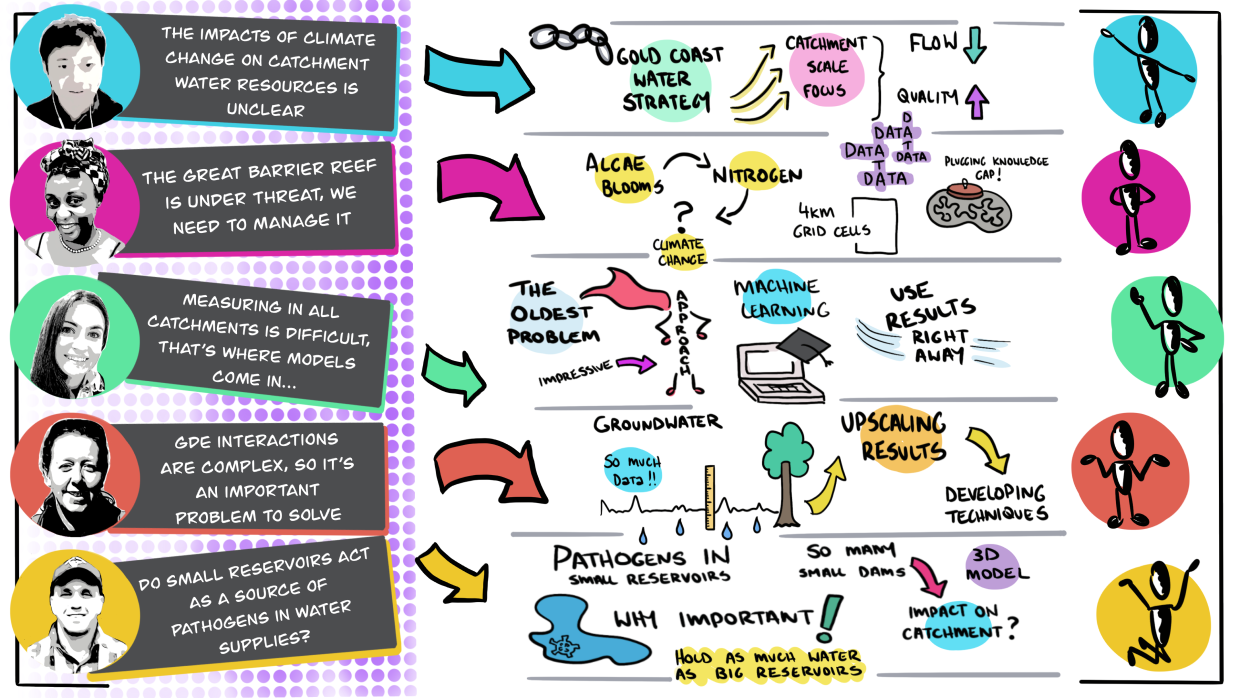
For more detail of this image click here
To maximise time, the IA presentations were held concurrently. Each of the research supervisors were invited to summarise an alternate HDRs presentation to the wider group in panel, hosted by Brian McIntosh. These summaries provided for interesting discussion from alternate supervisors on each of the projects and invited the audience to share thoughts and ask questions of those presentations they missed.
The afternoon session also included a panel discussion with current industry partners on the benefits the Innovation Cluster has provided them. Anna Holingsworth of City of Gold Coast, Nelson Corbett from DES and Chris Thompson from Seqwater were led by Piet Filet and explored how these collaborative opportunities have served their specific needs and provided broader opportunities for capacity building and problem solving.
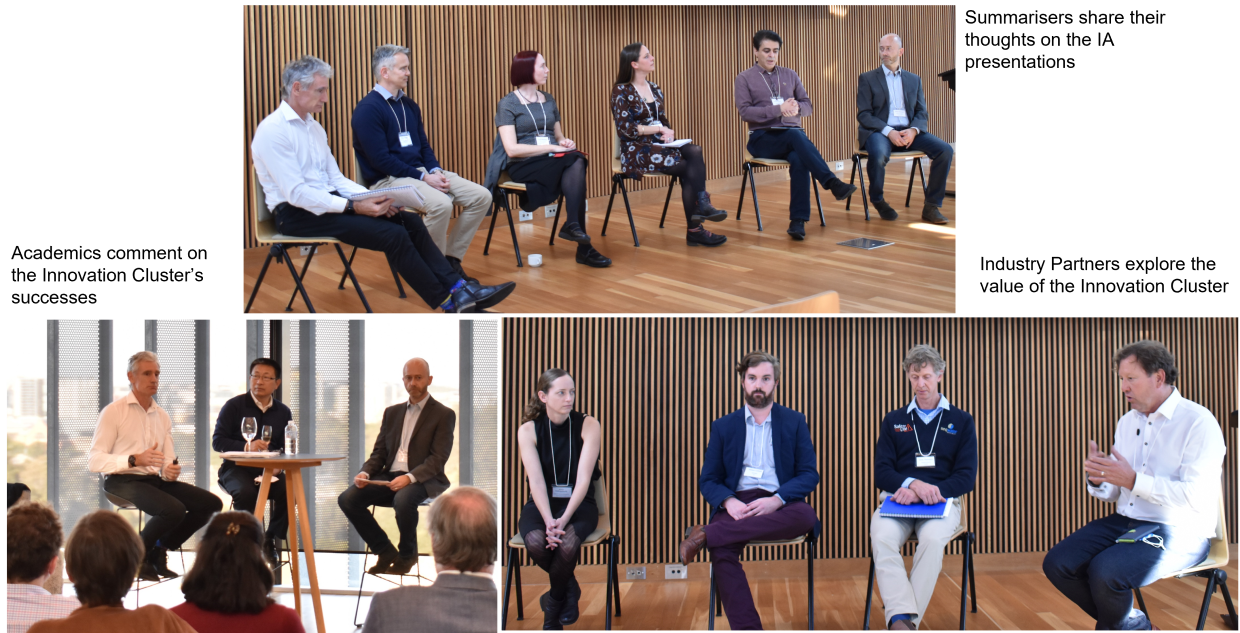
The final panel of the day, also hosted by Brian, was an opportunity for university representatives to comment on the success of the Innovation Cluster and the power generated by these collaborative partnerships. Prof. David Hamilton of Australian Rivers Institute Griffith University and Prof. Zhiguo Yuan of the Advanced Water Management Centre at the University of Queensland shared the long track record of collaborative research their centres have undertaken with industry partners.In the early days of the Advanced Water Management Centre at UQ, they reached out to industry partners to create link for sewers to be part of a science program. Now, after many years and collaborative research the Science is going back into Sewers!!!
Throughout the day and across all sessions, we were joined by our extraordinary “artist-in-residence”, Hayley Langsdorf of Thoughts Drawn Out who managed to capture key highlights from activities, discussions and presenters. These rich summaries are a great example of the power and benefit of engaging communication and we are very grateful to have these representations of the day.
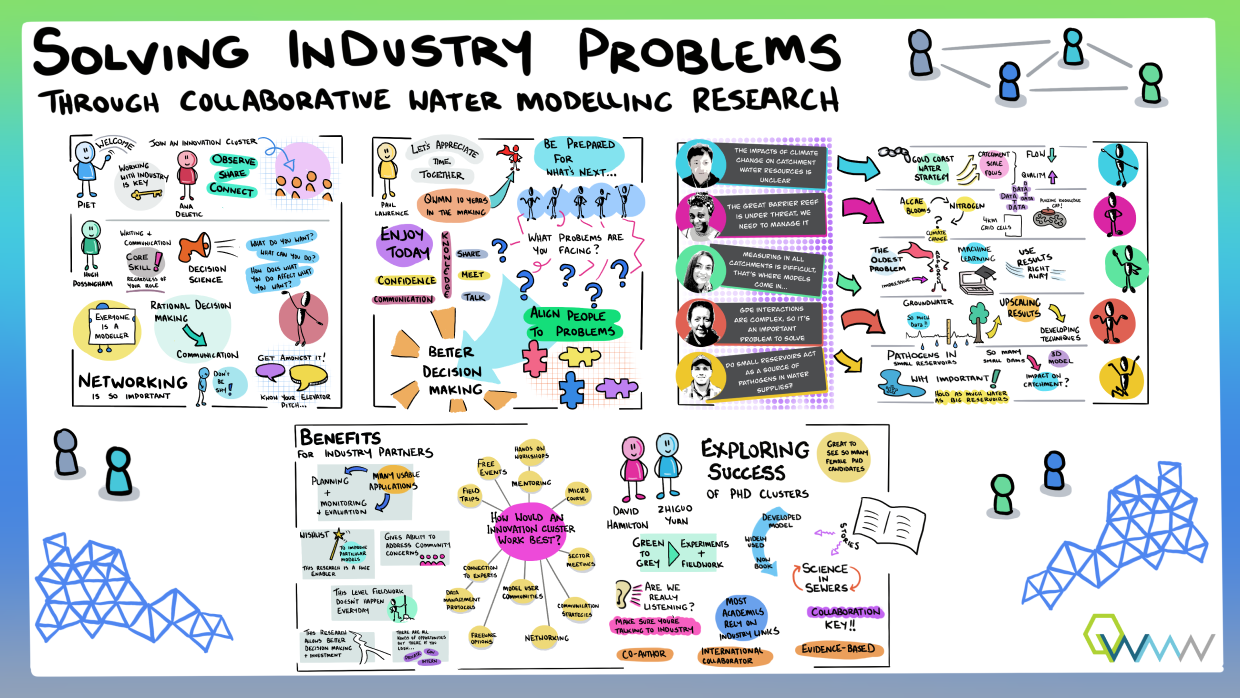
For more detail of this image click here
An invitation is on offer for additional and new HDR students from any university in Queensland to join our Innovation Cluster network. While considering this offer, participants on the day mapped what might be options for this Cluster to work on (outcomes here). This information supports QWMN to define the needs of HDRs and help them advance in the areas of:
If you are interested in joining the cluster please do send an email to [email protected].
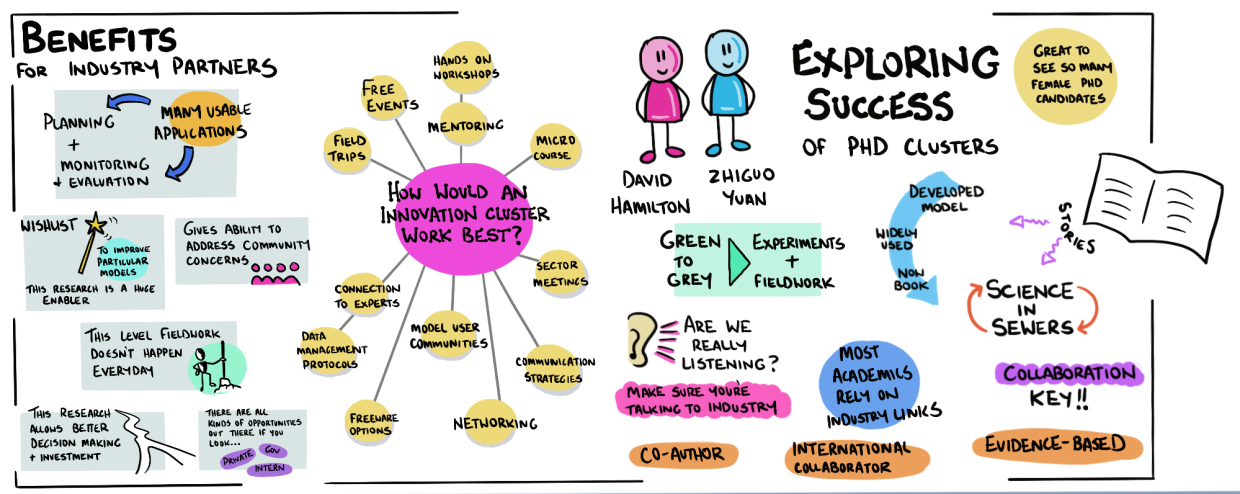
For more details click here
